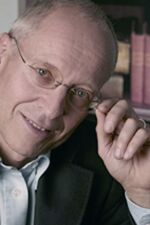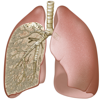Dr. med. Ruediger Dahlke |
The development of holistic oriented psychosomatics in the past and future
 |
|
|
Dr. med. Ruediger Dahlke |
With regard to therapists and particularly medical colleagues, their initial rejection surprised me. Their chief argument then, in the early 1980s, was: It can’t be that simple, because if it was, it would have been discovered long ago. In fact, it is fairly presumptuous to shout about such a banal connection as that between form and content. But what is spontaneously clear to every child has still not been adopted by traditional medicine. In fact, of course, everything in this world that has form and character also has meaning and sense. The fact that this should not apply particularly and only to the symptoms of illness, as traditional medicine assumes, is simply erroneous. Stomach ulcers are clearly crater-shaped, and many tumors are cauliflower-shaped, and naturally both have sense and meaning, just like all the other physical symptoms. On top of that, in the course of the past 20 years it has turned out that even those clinical pictures that traditional medicine attributes to the so-called mental illnesses can be interpreted just as well using this method. One does not have to go from the physical to the mental level here: in addition to depression, subjects such as burnout and anxiety can be interpreted using experiences that have helped many patients in the past.
In the end, I have merely achieved recognition for something that is a matter of course, also in medicine. This aspect has always reminded me of the experience of Frederic Leboyer, who revolutionized obstetrics with his book ‘Birth Without Violence’. At the beginning of the success of his book, which astounded even him, he said he had only proposed something completely natural – namely, treating new arrivals on the Earth with respect and love, instead of subjecting them to completely unnecessary and superfluous torture. This book was actually the beginning of the end of the old patriarchal obstetrics and introduced a completely new era in gynecology, so that we can rightly speak today of the celebration of birth.
If the interpretation of clinical pictures were to be just as successful, I would be very happy. It has been and remained as simple as at the beginning, and traditional medicine has ignored it, which however has not prevented some colleagues from turning their attention to it. Quite early on, Volker Zahn, professor of gynecology at Munich University and director of Straubing Hospital, not only went through the ‘archetypal medical training’ but also contributed to the books ‘Frauen-Heil-Kunde’ and ‘Der Weg ins Leben’ (‘the way to life’), which applied the method of clinical picture interpretation to gynecology and obstetrics. And all the other gynecologists in his and my area of activity, who proofread and added their comments to the books, could not prevent their traditional medicine colleagues from remaining at a distance. Although they could not claim that what we wrote was wrong, they thought we should not write what we did because it would make women uncertain and rebellious. These books too found a readership, not among our colleagues, but among the women and expectant mothers for whom they were actually written. And yet again, the development passed over the heads of the doctors. Some gynecologists even warned people off our books, thus considerably contributing to their popularity, because the mood of the population and especially of women was becoming increasingly critical about traditional medicine.
It was mainly non-medical practitioners who adopted this approach several years after the patients and two decades before the doctors, and ‘discovered’ it for themselves and for their patients. In the past 20 years, many non-medical practitioners have actually trained in ‘archetypal medicine’. Particularly in the last seminars, with which I shall end this series (out of consideration for my own plans), they have become very numerous. Much earlier, they had – or at least took – time for a type of medicine that was intended for the whole person and thus required much more time. Maybe it is also this chronic shortage of time that makes access to deeper, almost philosophical levels so difficult for doctors. A patient recently asked me whether I was a non-medical practitioner. Astounded, I said no, and asked him the reason for the question. “Because you take so much time for me,” was the depressing answer. But the question that spontaneously forces itself on me here is:
How much further do we have to go with this medical care before doctors take time for their patients
When it was almost too late, and I had almost given up approaching colleagues, the ethno-medic Ingfried Hobert managed to bring my interpretation method back to the doctors. I say ‘back’ because Paracelsus was
already on the way there centuries ago. In the meantime, I hold official training courses twice a year, organized by the general medical council. Perhaps even some of my colleagues will turn up to the last
series of training courses, ‘Archetypal Medicine’, starting in 2008.
At other levels, progress is much more convincing and forward-looking. Recently, the leading radionics company M-TEC brought out a
psychosomatics module as an accessory for its Quantec device, based on my holistic psychosomatics method. This type of information medicine, which makes use of energy transfer methods that have not yet been
scientifically proved and can best be explained with Rupert Sheldrake’s morphogenetic fields, will certainly grow in size and influence in the future. Of course, I am very happy that the comprehensive
body-mind relationship that defines my work is used as the basis of a forward-looking direction in medicine. In Axel Werbach’s book on radionics, incredible possibilities of this often become clear. A study
that particularly impressed me illustrates this: Scientists measured the tracks of a small robot that wandered around in a rectangular field and found – as expected – a random pattern. Such robots are
meanwhile used routinely as lawnmowers (Fig. A).
 |
|
 |
|
The researchers then – in the tradition of Konrad Lorenz – showed newly-hatched chicks this robot instead of their mother as the first thing they saw. The chicks were then placed in a cage at the end of the rectangular field. The robot was again set loose exactly as the first time and began its movements. But now it kept to the side nearest the chicks and ignored the other side (Fig. B). The experiment was repeated again and again and always returned the same result, from which we can only conclude that the chicks were influencing the robot with their longing for their ‘mother’. Other experiments conducted by Werbach show similar abilities in humans, who, for example, are capable of keeping away from a moving source of noise in their sleep. This proves that the vibrations – in this case of emotions and feelings – can influence not only other living beings but also machines, via previously unknown transmission routes. Radionics not only assumes this but also works successfully with this assumption, as Werbach shows in this book ‘Unser Bewusstsein: Der Komponist unserer Lebensmelodien’ (‘our consciousness: the composer of our life’s melodies’) with many different but similarly spectacular experiments. When I take stock of 30 years of clinical picture interpretation and consider this access with Quantec to the field of radionics, I see a broad connection from the dissemination via patients to non-medical practitioners, individual doctors, and now to an information medicine that belongs to the future, similar to psychosomatics. If these two movements now come together, so much the better and promising for the future.
In the long term, the comprehensive link between body and mind cannot be neglected and ignored by medicine, even by conservative doctors interested only in securing their standard of living.
The medicine of the future will (have to) deal intensively and persistently with this subject. Possibly (and unsettlingly), fewer and fewer doctors will take part in this medicine, but it is to be hoped that more and more of them will be able to free themselves from the grip of the old fossilized, sterile system and move in this direction on their own feet and at their own responsibility. That, anyway, is what I wish heartily for myself and for medicine, and most of all for the patients.
Warning: include(/www/htdocs/w00ba73f/system/includes/chinese/footer.php) [function.include]: failed to open stream: No such file or directory in /www/htdocs/w00ba73f/webEdition/we/templates/templates_quantec_ch/chinese/default_select_includes.php on line 299
Warning: include() [function.include]: Failed opening '/www/htdocs/w00ba73f/system/includes/chinese/footer.php' for inclusion (include_path='.:/usr/share/php:..') in /www/htdocs/w00ba73f/webEdition/we/templates/templates_quantec_ch/chinese/default_select_includes.php on line 299




